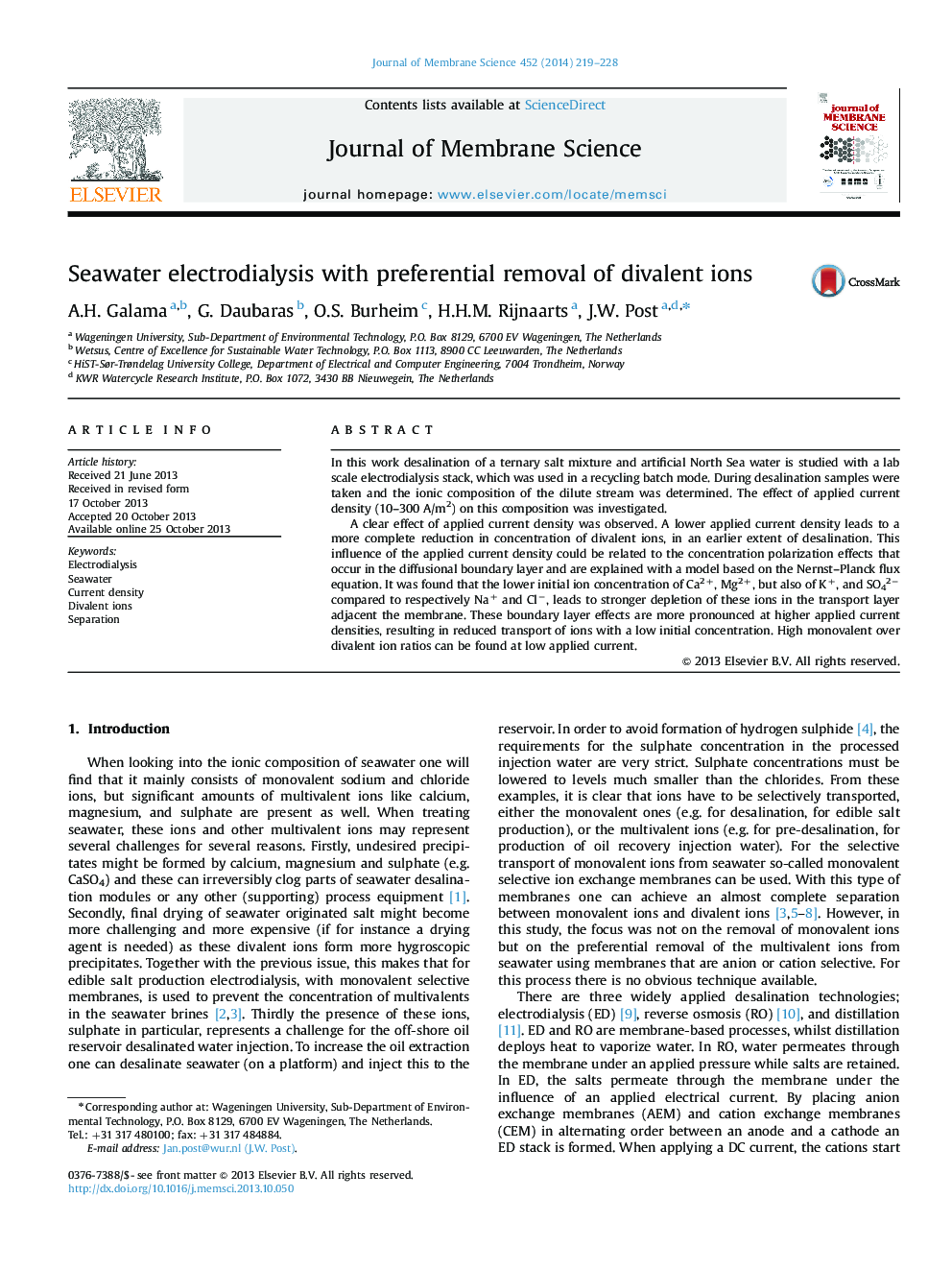| Article ID | Journal | Published Year | Pages | File Type |
|---|---|---|---|---|
| 633709 | Journal of Membrane Science | 2014 | 10 Pages |
•A theory of the permselectivity of ion exchange membrane system was developed.•Membrane selectivity is mainly governed by concentration polarization.•Lower applied current densities lead to higher divalent ion removal.•The monovalent over divalent ion ratio can be increased by a factor 20–60.
In this work desalination of a ternary salt mixture and artificial North Sea water is studied with a lab scale electrodialysis stack, which was used in a recycling batch mode. During desalination samples were taken and the ionic composition of the dilute stream was determined. The effect of applied current density (10–300 A/m2) on this composition was investigated.A clear effect of applied current density was observed. A lower applied current density leads to a more complete reduction in concentration of divalent ions, in an earlier extent of desalination. This influence of the applied current density could be related to the concentration polarization effects that occur in the diffusional boundary layer and are explained with a model based on the Nernst–Planck flux equation. It was found that the lower initial ion concentration of Ca2+, Mg2+, but also of K+, and SO42− compared to respectively Na+ and Cl−, leads to stronger depletion of these ions in the transport layer adjacent the membrane. These boundary layer effects are more pronounced at higher applied current densities, resulting in reduced transport of ions with a low initial concentration. High monovalent over divalent ion ratios can be found at low applied current.
